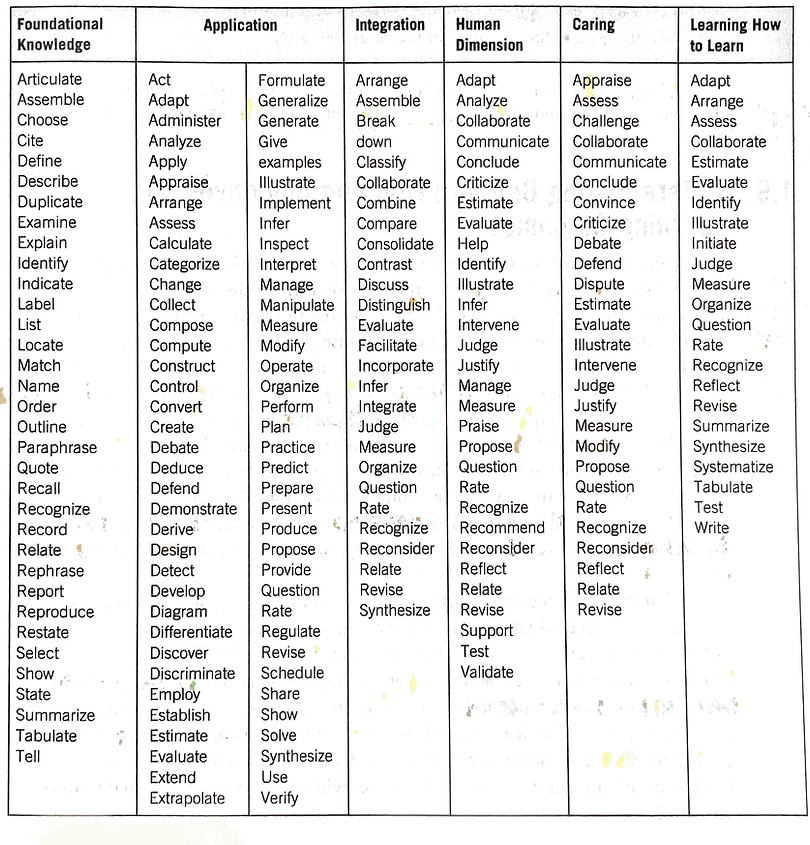ID ASSESSMENTS & EVALUATIONS

ASSESSMENTS & EVALUATIONS
Overview:
Assessments and Evaluations are essential components of the instructional design process, used to measure the effectiveness of learning experiences and ensure they meet their intended goals. While assessments focus on measuring learner progress and performance during or after instruction, evaluations examine the overall effectiveness of the instructional program itself. Together, they provide insights into what learners have achieved and how well the instruction aligns with learning objectives and organizational needs.
Relevance to Adult Learning:
In adult education, assessments and evaluations are critical for ensuring that learning experiences are relevant, practical, and tailored to adult learners' unique needs. Assessments provide learners and facilitators with actionable feedback on performance, reinforcing engagement and highlighting areas for improvement. Evaluations, on the other hand, ensure that instructional programs deliver meaningful, measurable outcomes for learners, stakeholders, and organizations. This dual approach promotes learner success while enabling ongoing improvement of instructional materials.


(Rollins School of Public Health, n.d.)
Difference Between Assessments and Evaluations
-
Assessments are learner-focused, measuring individual progress and understanding through formative (ongoing) or summative (final) activities. Uses assessment tools such as quizzes, projects, self-reflection activities, and real-world performance tests are commonly used to gauge learner understanding and application of knowledge.
-
Evaluations are program-focused, analyzing the broader success of instructional design by gathering feedback and performance data to refine and improve the learning experience. Uses evaluation tools such as surveys, analytics software, and stakeholder interviews provide data on the overall impact of the instruction, measuring its success against predefined goals.
Praxis and Reflective Practice:
Assessments can be used to track learner understanding throughout the instructional process, ensuring real-time adjustments for better outcomes. Conducting evaluations post-instruction to analyze the overall success of the program and identify areas for long-term improvement.
Need to continuously review data from both assessments and evaluations to refine instructional strategies and materials. In turn, these processes enhance learning effectiveness and align instruction with the goals of adult learners and organizations.

ASSESSMENTS
Overview:
Formative and summative assessments are essential tools for evaluating learning transfer and tracking progress. These assessments help facilitators check in with learners to ensure they are retaining newly acquired information and effectively applying prior knowledge. Learning Assessment Techniques (LATs) provide structured methods to gather feedback and measure learner progress throughout the learning process, fostering a more dynamic and responsive educational experience.
Relevance to Adult Learning:
For adult learners, assessments serve as a way to gauge the relevance and effectiveness of their learning in relation to their personal or professional goals. LATs help ensure that assessments are meaningful and tied to real-world applications, helping learners see their progress and identify areas that need further development. Assessments also enhance competency by providing learners with clear feedback on their mastery of new concepts or skills. When gaps in understanding are identified, learners are more empowered to focus on areas for improvement.

(Rutger University, n.d.)
Tool Use:
This tool leverages LATs to conduct both formative and summative assessments throughout the learning process. Formative assessments can be used at the start of a course topic to gauge prior knowledge, while summative assessments measure learning outcomes at the end of the topic. LATs can include a variety of techniques such as concept mapping, peer reviews, or application-based scenarios that assess knowledge in a way that is interactive and reflective of learners’ progress.
Process for identifying the best LAT to meet the learning objective(s):
-
Identify the Action Verb from the learning objective.
-
Using Bloom's and Fink's Taxonomies, identify what category your action verb falls under. (see Table 1 & 2 image below)
-
Select a LAT from a list of various LAT under the Fink's category identified. (see Table 3 below)
-
Utilize Barkley & Howell's book, Learning Assessment Techniques: A Handbook for College Faculty, to get a deep dive of how to design and assess the chosen LAT.
TABLE 1:
FINK'S SIGNIFICANT LEARNING TAXONOMY AND OBJECTIVE ACTION VERB CORRELATED:

(Barkley & Howell, 2016)
TABLE 2:
BLOOM'S AND FINK'S TAXONOMIES

(Syracuse, 2021)
TABLE 3:
LEARNING ASSESSMENT TECHNIQUES (LATS):
 |  |  |
|---|---|---|
 |  |
(Barkley & Howell, 2016)
ID Assessments Example:
Click on the button below to look at an example Assessments from a course I created to educate learners on 5S Lean Manufacturing.

Additional Resource Tools:
Use in Manufacturing Facilitation:
In manufacturing facilitation, formative LATs are used to assess learners' prior knowledge and measure their understanding of new concepts or skills during hands-on practice. For example, a step-by-step task analysis or demonstration assessment can help learners see their progress in real time. Summative LATs can be used for capstone projects or final hands-on assessments, where learners demonstrate their full mastery of the required skills. LATs in this context also help ensure that assessments are not only about retention but also about the practical application of skills in real-world scenarios.
Manufacturing Assessment Examples:
Praxis and Reflective Practice:
Assessments should be viewed as part of an ongoing cycle of learning and reflection. After completing an assessment, both learners and facilitators should reflect on the outcomes, what was mastered and what still needs attention. This continuous feedback loop ensures that learners are not only tested but also given the opportunity to refine their skills and understanding, leading to more meaningful learning experiences. LATs encourage this reflective practice by providing structured ways to gather actionable feedback and adapt learning strategies as needed.

EVALUATIONS
Overview:
Evaluation is a critical step in the instructional design process, aimed at assessing the effectiveness of instruction and identifying areas for improvement. It encompasses both formative evaluations, conducted during the development phase to refine materials, and summative evaluations, carried out post-implementation to measure overall success. Additionally, collecting feedback from learners and stakeholders and analyzing data ensures that instructional materials evolve to meet both learner needs and organizational goals.
Relevance to Adult Learning:
Evaluation is essential in adult learning as it ensures that instructional content aligns with learners' practical needs and goals. Formative evaluations improve the usability and clarity of materials before full implementation, while summative evaluations measure whether learners achieve the intended outcomes. Continuous evaluation and feedback incorporation ensure that instructional programs remain relevant, impactful, and adaptable to diverse adult learning environments, enhancing engagement and effectiveness.
Tool Use:
-
Formative Evaluation Tools:
-
Pilot testing with small learner groups.
-
Surveys, observation checklists, and interviews to collect initial feedback.
-
Iterative revisions based on findings.
-
-
Summative Evaluation Tools:
-
Post-training assessments to measure knowledge and skill acquisition.
-
Surveys and analytics platforms (e.g., Google Forms, LMS data) to evaluate learner performance and instructional effectiveness.
-
-
Feedback Collection Tools:
-
Use focus groups, interviews, or online tools (e.g., Microsoft Forms or Qualtrics) to gather stakeholder insights.
-
-
Data Analysis Tools:
-
Spreadsheets, statistical software, or trend analysis tools to identify actionable improvements and refine future iterations.
-
ID Evaluations Example:
Click on the button below to look at an example Evaluations from a course I created to educate learners on 5S Lean Manufacturing.
Use in Manufacturing Facilitation:
In manufacturing facilitation, formative LATs are used to assess learners' prior knowledge and measure their understanding of new concepts or skills during hands-on practice. For example, a step-by-step task analysis or demonstration assessment can help learners see their progress in real time. Summative LATs can be used for capstone projects or final hands-on assessments, where learners demonstrate their full mastery of the required skills. LATs in this context also help ensure that assessments are not only about retention but also about the practical application of skills in real-world scenarios.
Praxis and Reflective Practice:
Assessments should be viewed as part of an ongoing cycle of learning and reflection. After completing an assessment, both learners and facilitators should reflect on the outcomes, what was mastered and what still needs attention. This continuous feedback loop ensures that learners are not only tested but also given the opportunity to refine their skills and understanding, leading to more meaningful learning experiences. LATs encourage this reflective practice by providing structured ways to gather actionable feedback and adapt learning strategies as needed.
ADDITIONAL RESOURCES & REFERENCES
-
Barkley, E.F., & Howell Major, C. (2016). Learning assessment techniques: A handbook for college faculty. Jossey-Bass.
-
Brown, A. H., & Green, T. D. (2020). The essentials of instructional design: Connecting fundamental principles with process and practice (4th ed.). Routledge.
-
Davis, J.R., & Arend, B.D. (2013). Facilitating seven ways of learning: A resource for more purposeful, effective, and enjoyable college teaching. (pp. 31-69). Stylus Publishing.
-
Edutopia. (2021, March 15). A simple tool for aligning instruction and assessment. Retrieved from
https://www.edutopia.org/article/simple-tool-aligning-instruction-and-assessment -
Google. (n.d.). Google Forms. Retrieved November 17, 2024, from https://docs.google.com/forms/u/0/
-
Great Schools Partnership. (2015, September.). Summative assessment design guide. Retrieved from
https://www.greatschoolspartnership.org/wp-content/uploads/2016/11/Summative_Assessment_Design_Guide_DRAFT_September-2015-4.pdf -
Litt, S. (2024, September 26). 18 best statistical analysis software to let data lead you in 2024. The CFO Club. https://thecfoclub.com/tools/best-statistical-analysis-software/
-
Microsoft. (n.d.). Microsoft forms. Retrieved from https://www.microsoft.com/en-us/microsoft-365/online-surveys-polls-quizzes
-
Postier, L. & Wittig, A. (2022, November). Instructor guide: Best practices and sample activities for virtual learning. United States Army Research Institute for Behavioral and Social Sciences. Retrieved from https://apps.dtic.mil/sti/pdfs/AD1186298.pdf
-
Renard, L. (2023, August 17). 40 interactive template exercises to digitalize your lessons. BookWidgets. Retrieved November 17, 2024, from https://www.bookwidgets.com/blog/2017/11/40-interactive-template-exercises-to-digitalise-your-lessons
-
Rollins School of Public Health. (n.d.). Types of assessments [Image]. Emory University. https://sph.emory.edu/rollins-tlc/course-design/assessments-strategies/index.html
-
Rutgers University. (n.d.). Assessment cycle [Image]. Rutgers University. https://otear.rutgers.edu/assessment/
-
Syracuse University. (2021). A crossroad between Bloom's and Fink's taxonomies: Guiding verbs for developing outcomes [Image]. Syracuse University. https://effectiveness.syr.edu/wp-content/uploads/2024/02/Outcome-Framework.pdf
-
Qualtrics. (n.d.). How to conduct effective summative assessments. Retrieved from https://www.qualtrics.com/blog/summative-assessments-guide/
-
University of California, Berkeley. (n.d.). Formative assessment of teaching. Retrieved from
https://teaching.berkeley.edu/teaching-guides-resources/assessing-learning/formative-assessment-teaching -
University of Colorado Boulder. (n.d.). Summative assessments. Retrieved from
https://www.colorado.edu/center/teaching-learning/teaching-resources/assessment/assessing-student-learning/summative-assessments -
UC Berkeley. (n.d.). Design effective assessments. Retrieved from
https://teaching.berkeley.edu/teaching-guides/assessing-learning/design-effective-assessments -
Valenzuela, J. (2022, February 18). A simple tool for aligning instruction and assessment. Edutopia. Retrieved from
https://www.edutopia.org/article/simple-tool-aligning-instruction-and-assessment -
Wees, D. (n.d.). 56 different examples of formative assessments. New Vision for Public Schools. Retrieved November 17, 2024, from https://www.azed.gov/sites/default/files/2017/01/56%20Different%20Examples%20of%20Formative%20Assessment.pdf?id=5887e207aadebe16205a25dd
-
Wlodkowski, R. J., & Ginsberg, M.B. (2017). Enhancing adult motivation to learn: A comprehensive guide for teaching all adults (4th ed.). (pp. 313-315). Jossey-Bass
